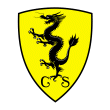
 |
|
|
Our integrated model-based data architecture and data fusion tech- niques were specially developed by us as part of the AutoSemantic extension package of the Ontologic Systems (OSs) and n-Dimens- ional Operating Systems (nDOSs) platforms OntoL4, OntoLix and OntoLinux for vehicles of all kinds and supports all of our Active Components as well as our other computing technologies and multi- media solutions, as necessary and sensible.
In vehicle control and safety systems, our Active Sensors are placed optimally considering vehicle application profiles. These sensors can be of different technologies and accuracies with the possibility of recognizing, classifying, and tracking objects, as well as making decis- ions. Depending on the environmental conditions, dangers, and geometries of traffic situations and participants, the location of objects relative to the senors can be different. Therefore, the accu- racy of object recognitions and their tracks from the sensors is diff- erent during the course, and the navigation and the guidance. Hence, it is imperative to improve recognition, classifying, and track- ing accuracy in order to avoid miss interpretations and wrong decis- ion makings. The fusion of object state vectors delivered by the Active Sensors can improve the accuracy significantly.
The data fusion technique, which is object state vector fusion in essence, for:
Ideally, our technique is used in real time to provide data to all Active Components with highest accuracy and reliability. Its salient features are that for example: